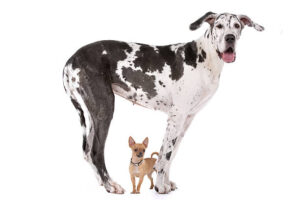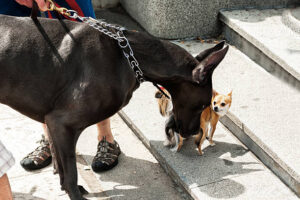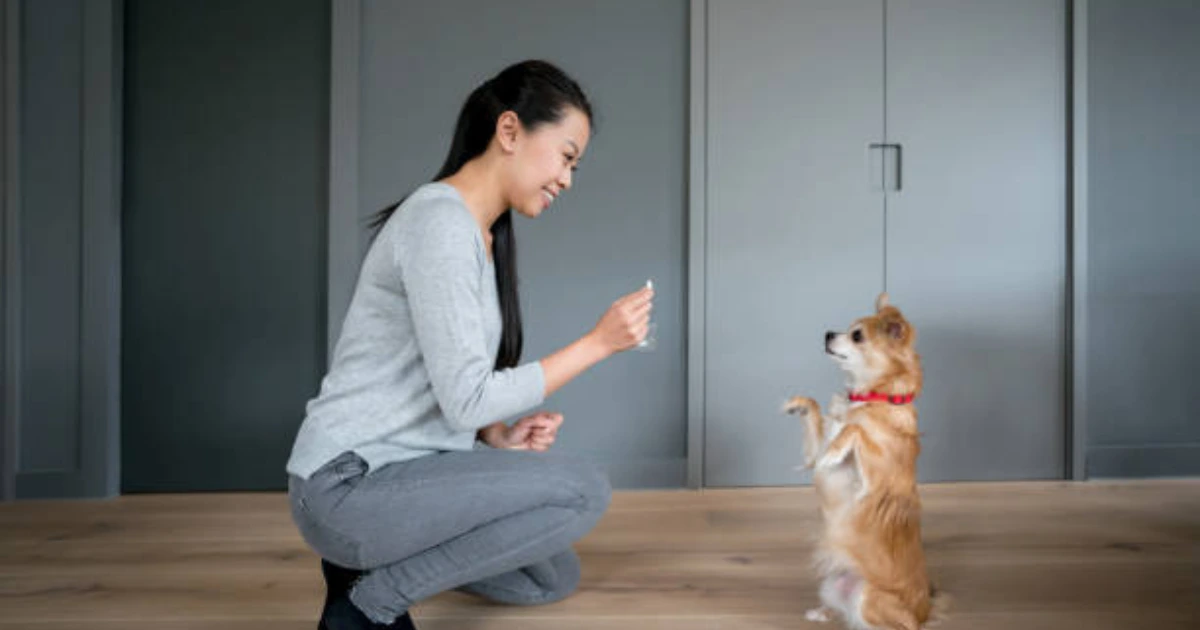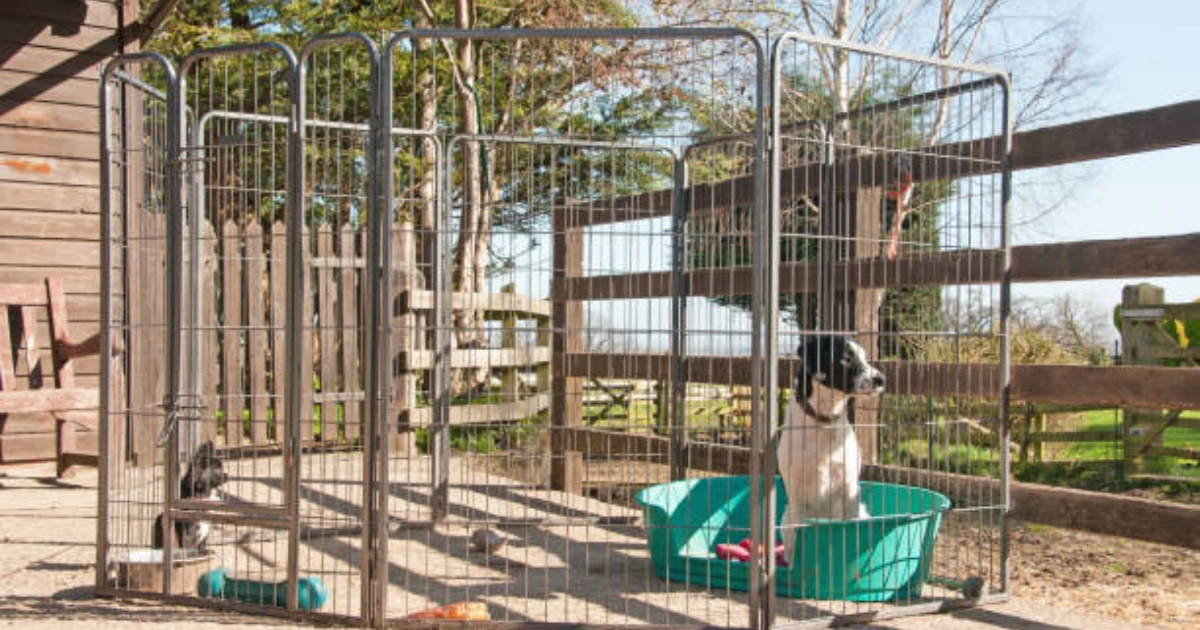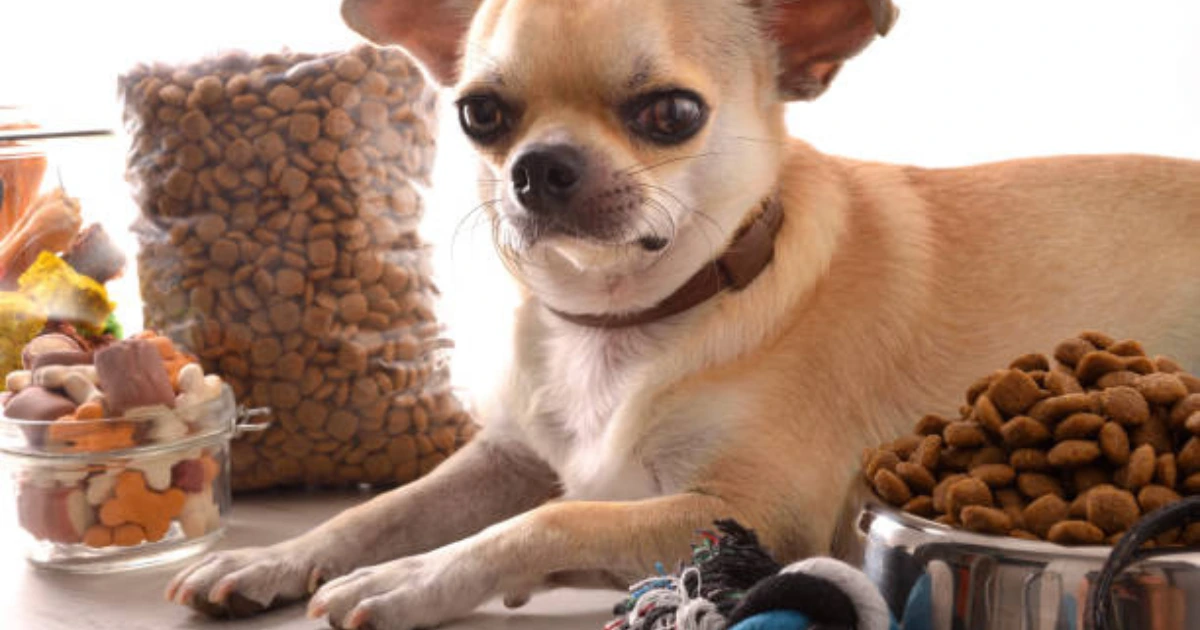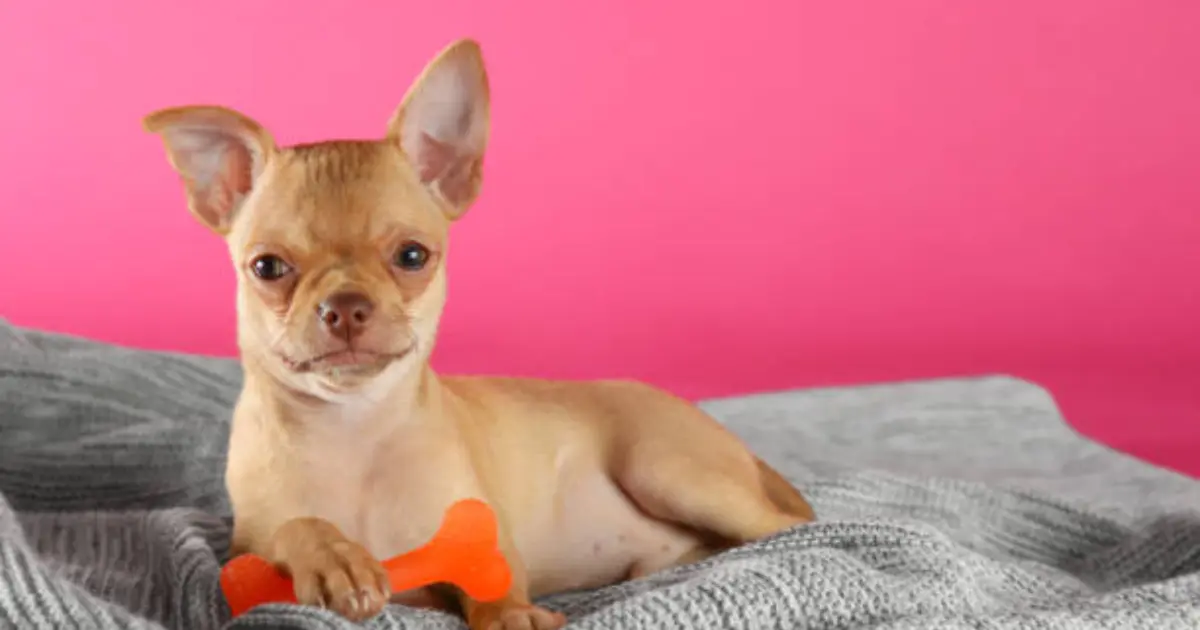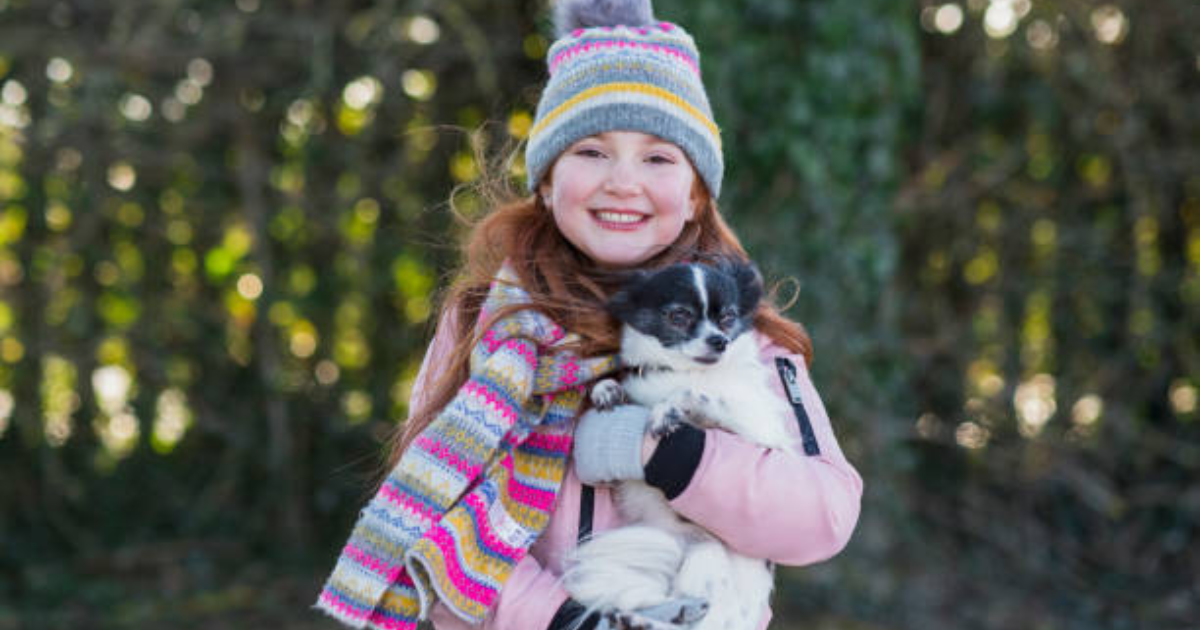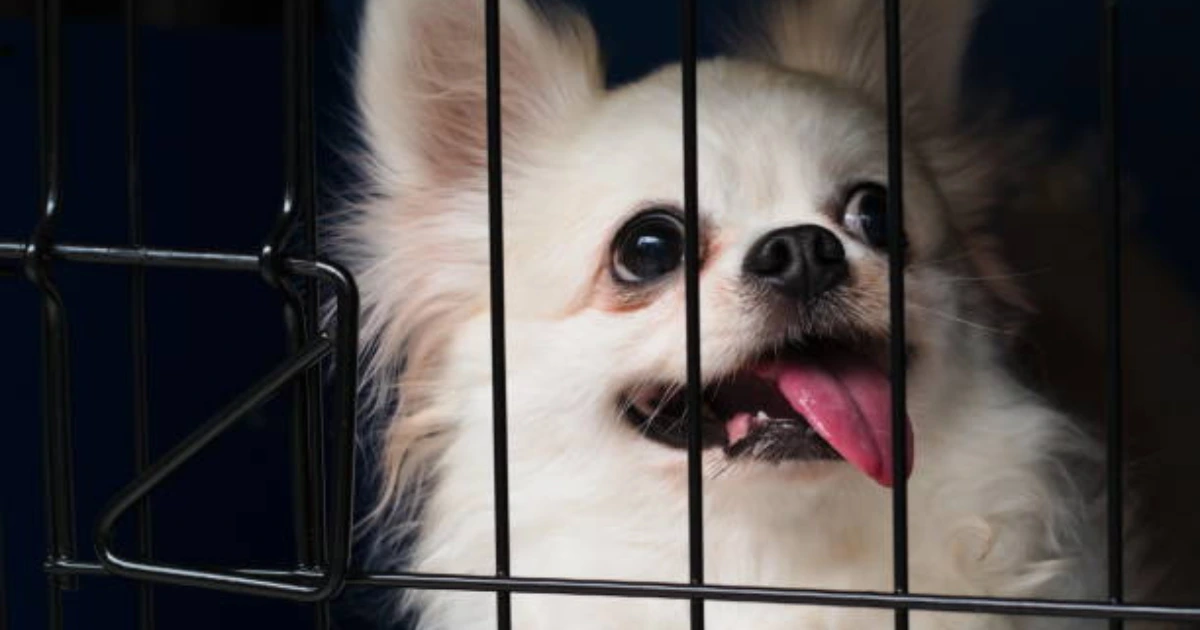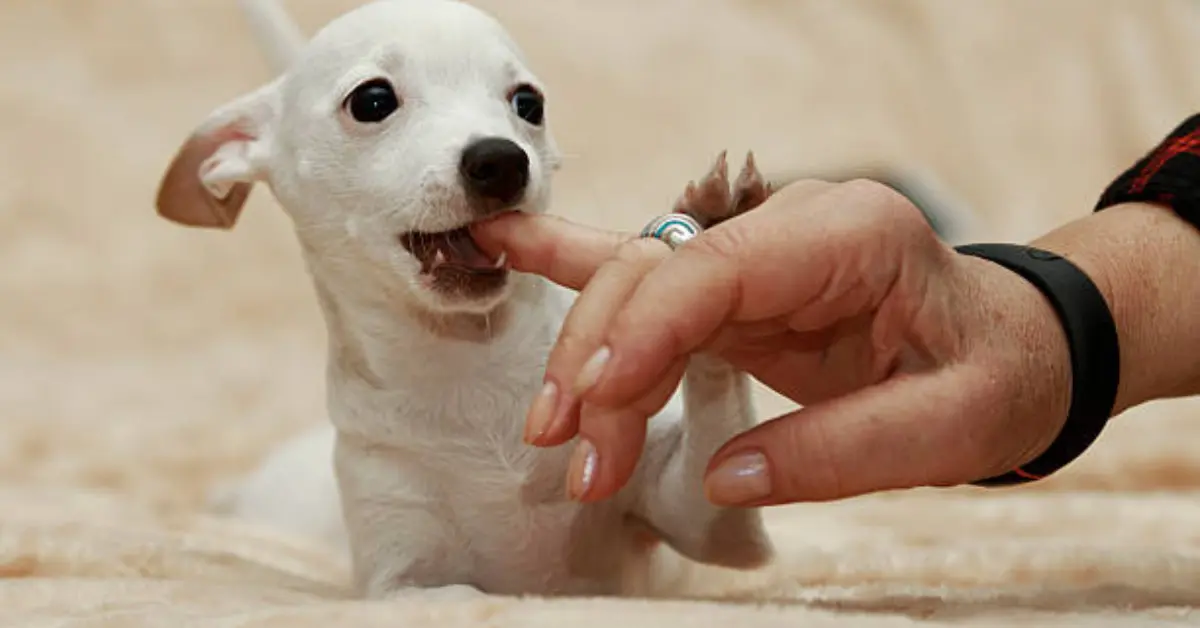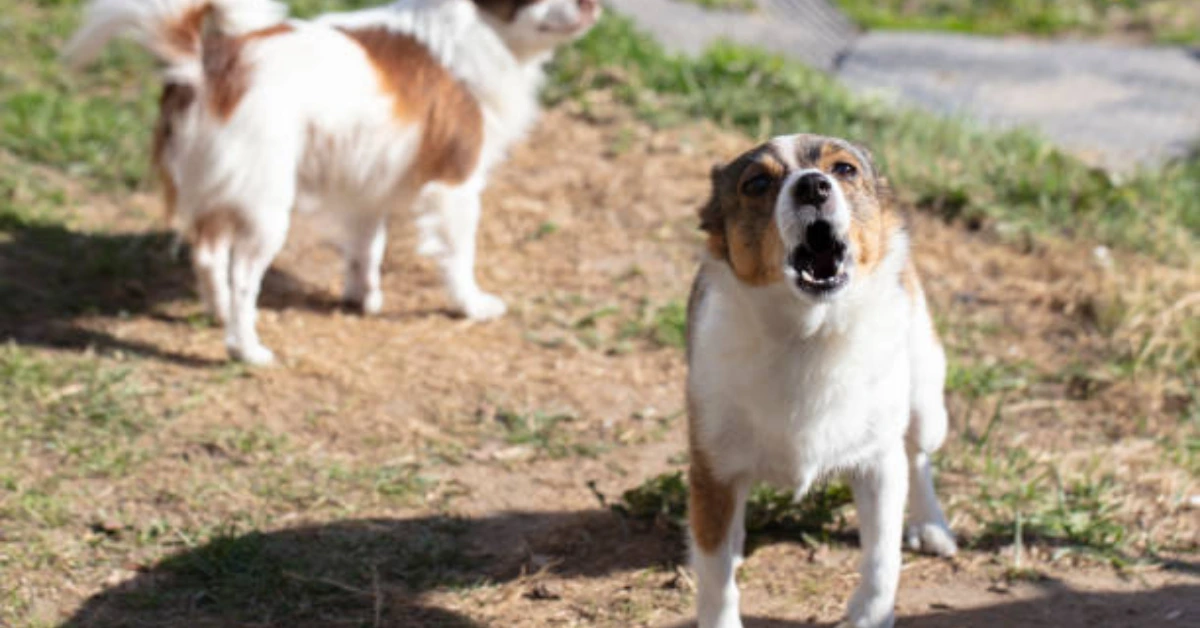A confident, calm, and happy Chihuahua is the result of socializing him well.
You may need to expose yours to a New bigger dog at some point. Chihuahuas can be as small as 3.3 pounds, while the biggest dog breeds can be 170 pounds or more.
This huge size difference can put your Chihuahua at an unfair disadvantage, and he may naturally feel scared around larger breeds.
But if you follow the right safety rules, you can introduce your chihuahua to bigger dogs and get them to get along and even play together.
Advertisement
Step By Step Guide
1. Choose The Right meeting place
When deciding where to introduce your Chihuahua to a bigger dog, choose neutral ground, which is somewhere neither dog is territorial over.
For example, you could hold the meeting at a park or beach that none of them have ever been to. A dog park should also be fine since both dogs should expect to meet other dogs there.
If you’re worried that the two dogs might not get along, you can always call a professional dog behavior consultant for advice. They can give you advice and go to the meeting with you.
If you get a Chihuahua from a shelter, the workers will be happy to help you get him used to a bigger dog.
2. Introducing the dogs
Let the dogs walk close to each other on their leashes before they can meet properly. Let them see each other, but keep some space between them.
Keep them on a loose leash so they don’t think anything is wrong. A tight leash can show that you’re nervous, which can change how your chihuahua acts.
Next, turn around and switch lanes, keeping the dogs apart, and letting them smell each other’s tracks.
Once they know each other’s smell, you can let them get close to each other and sniff each other. Let your Chihuahua set the pace since he’s likely to feel less sure of himself around a bigger dog.
If they look fine, take the leashes off. Step back and let the dogs do what they need to do. You don’t have to be too bossy; doing so can make the dogs nervous and ruin the meeting.
3. Keep A Close Eye On The body language
Watch the dogs’ bodies as they meet. It should be easygoing.
Bigger dogs may sometimes see smaller dogs as prey.
Watch for behavior like staring, stiffness, stalking, and lunging. If you’re worried, put yourself between the two dogs to give them space and use treats to distract the bigger one.
Please don’t pick up your Chihuahua because the big dog might think he’s a toy and go after him.
If they start playing together, make sure it’s fun, easy, and bouncy. If the bigger dog slows down or even lies down to meet your chihuahua’s level, that’s a good sign that he’s being nice.
4. Walk Your Tiny Chihuahua And The Larger Dog Together
After getting used to the larger dog, the next step is to walk both dogs at the same time. They should be far enough apart that they can see each other, but not so close that they keep trying to get to each other.
Walk both dogs in the same direction, leaving enough space between them for comfort. Then, go back and switch places with the other dog and person, so that each dog can smell where the other walked.
Dogs can learn about other dogs by sniffing their urine, so let them check out places where other dogs go to the bathroom. Both dog handlers should stay calm and hold the leashes as loosely as they can.
If both dogs are acting calm and friendly toward each other, you can slowly move them closer together while keeping up the parallel walking. As the dogs get closer, don’t let them come up to each other face-to-face. Meeting head-on is stressful and not how dogs are meant to meet.
5. Allow the Dogs to Interact Off-Leash
If you’re happy with how the dogs are getting along, take them to a fenced-in area, take the leashes off, and let them play. Give the dogs a few minutes to sniff each other while you praise their calm behavior. Then, get the dogs to move with you for one last, short walk.
The dogs could keep sniffing each other to learn more about each other, or they could start playing. Look for the universal sign that a dog wants to connect, which is a play bow in which the dog puts its elbows on the ground and its back end in the air.
As the dogs play, look for signs of a respectful relationship, like when they give and take turns and take breaks.
6. Make Sure Your Chihuahua Has Lots Of Easy Escape Routes
If your small dog jumps on the couch or into your lap, you should tell your big dog to leave the small dog alone. A great way to make a safe space for them to be together is to put an exercise pen in the living room so that the small dog can hang out on one side and the big dog can hang out on the other. Having obstacles that the small dog can duck under to get out of the way of the large dog’s feet can be helpful for a quick break and safety while the dogs play.
Introducing Your New Larger Dog to Your Home
Once you’ve shown your new larger dog to your chihuahua, you can show your new dog around your house.
Instead of trying to bring both dogs indoors right away, you should have a helper take your chihuahua for a walk. Then give your new larger dog some time to explore his new home on his own.
Watch your new dog as he checks things out. When he’s done, take him to an open area of your house that’s not near the front door. When there aren’t enough places to move around, people may bump into each other by accident.
Again, pick up any dog toys, treats, beds, cherished items, or food that could make the dogs fight. Then you can ask your assistant to bring your chihuahua inside.
Daily Routine After Bringing The New Larger Dog
Try to keep everyone in your home calm while the dogs get used to each other. Don’t have a “welcome to the family party” on the first day home.
Keep your resident dogs on their normal daily schedules, and try to set aside time for each dog to spend alone with you, like going for walks.
Keep an eye out for indicators that your chihuahua and the larger dog are getting nervous, including hard gazes, low rumbling, hard gazes, and body blocking. If you see any of these signs, you need to act right away.
Keep the dogs apart and give them something else to do. Give them at least 20–30 minutes away from each other before letting them talk again.
Here are some more important tips to keep the peace after introducing dogs:
Mealtimes Supervision
At meal times, you should always keep your new larger dog away from your chihuahua. You can separate them by putting their bowls in different rooms or by using a dog gate.
If one dog is done eating before the other, don’t let him hang around while the other dog eats. Maintain them separated until both dogs have licked their bowls clean. This will keep them from fighting. After feeding time, you should always pick up the bowls.
Each Dog Should Have his Bed
Some dogs are very possessive of their beds, so keep an eye on both of them to make sure they are behaving well around their beds. Even if one bed is big enough for both dogs, it’s a smart option to buy a distinct bed for your larger dog.
Introduce Toys In A Calm Manner
After the first time, bring toys back into the house slowly instead of bringing out the whole toy chest at once. When your dogs try out a new toy, you should always keep an eye on them.
Look for dogs that play with each other without showing signs of guarding, like standing over the toy or biting the other dog if it gets too close.
When you leave, keep the dogs apart
Having time alone is an important part of getting to know someone. Even if you’re just taking a shower, you should always keep your dogs apart when you can’t watch them. This keeps your tiny chihuahua safe, but it also gives them time to relax without each other.
Long term, it’s best to watch them together and keep them apart when no one is home. This will keep everyone safe and help people get along better.
Last Word
Remember to give your chihuahua praise for being good from the start. You’ll encourage him to keep going and give him more faith in what he’s doing.
In the end, if you’d feel more comfortable with a professional dog behavior consultant, it’s a good idea to hire one so that the meeting goes as smoothly and successfully as possible.
Here is a video that proves that your chihuahua can get along with a larger dog.
YOU MAY ALSO LIKE:
How to Socialize Your Chihuahua Puppy
Understanding Your chihuahua’s Body Language-Sounds And Movement
Small Dog Syndrome in Chihuahuas – What is it? How do To prevent it?
Advertisement


